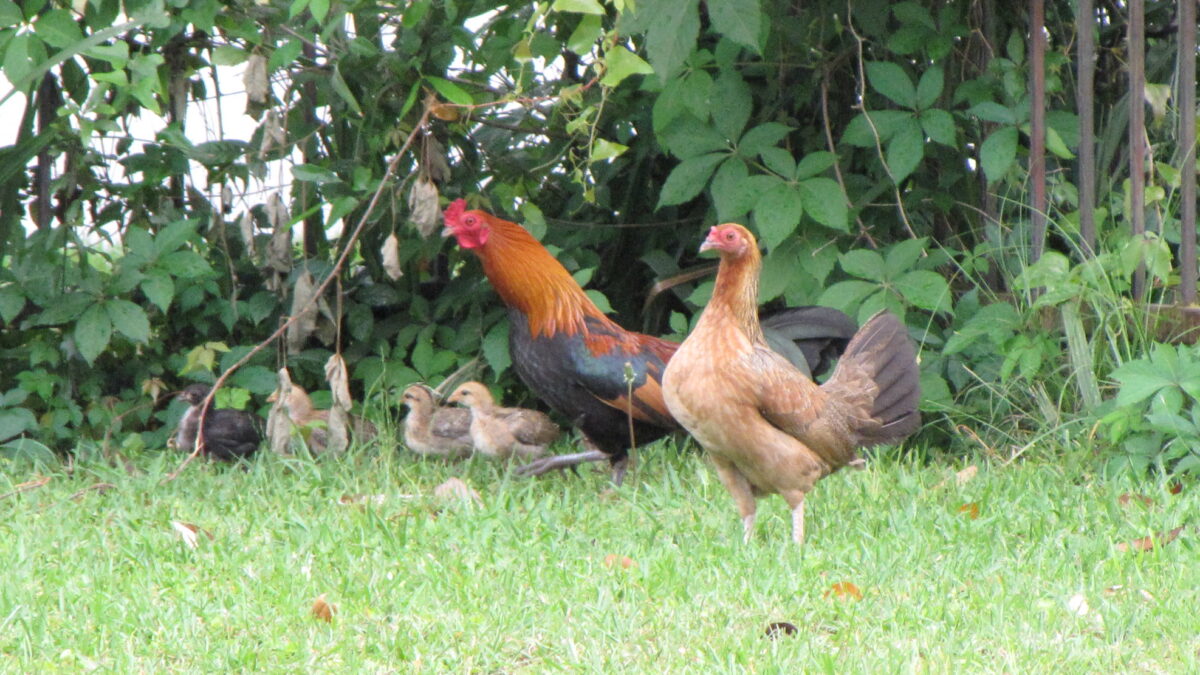Here’s How To Butcher A Chicken In Your Backyard For Dinner
BY: LAURA BAXTERAPRIL 13, 2022
6 MIN READ

What practical steps can you take to protect your family’s food supply? Here’s a short guide to keeping and killing chickens.

LAURA BAXTER
MORE ARTICLES
SHARE
- Share Article on Facebook
- Share Article on Twitter
- Copy Article Link
- Share Article via Email
Even in many urban communities, you can generally keep a couple of chickens in the back yard. Compared with their store-bought cousins, backyard eggs are attractive, delicious, nutritious, humane, and just plain fun. For those who care about such things, many chicken breeds and chicken coops are truly Pinterest-worthy.
However, yard eggs come with a darker side, often overlooked. Older hens become less productive over time. And roosters (because sex is binary) do not lay eggs at all. Especially if you start with chicks, you will end up with unwanted roosters. Your chicken-loving friends will also end up with unwanted roosters.
Give this tragedy a delicious plot twist. Rehome those roosters to your freezer!
Baby Steps
Maybe you currently only cook with boneless tenders or pre-cooked “chicken” products. It’s time to get comfortable with whole, raw chickens. Learn how to thaw them, wash them, remove the giblet package, and cook them.Then, learn how to process a cooked chicken carcass. Carve up all the good pieces and serve them for dinner. Then pick off all the little meat morsels and save them for recipes or chicken salad.
Finally, toss the bones and all the leftovers into a crockpot with a couple of stalks of celery, a bay leaf, and maybe a couple of pieces of raw ginger. In the morning, pour the broth through a strainer and refrigerate or freeze. Have soup night at least once a week. Soup is good prep food, besides just generally nutritious and soothing.
Get the Gear
You don’t need much to butcher your own chickens: A killing cone, a large trash can with a liner, a washable table, a small, sharp knife.Securely fasten the killing cone to a post or tree, pointed end down, at about chest level. Place the trash can under the opening of the killing cone. If you want to pluck your rooster, as opposed to skinning it, you will also need a large pot of scalding hot water.
Note that butchering can be tough on the hands, so you may want to use surgical gloves (something that still allows maximum dexterity). Or use a shielding lotion.
Do the Deed
A picture is worth a thousand words, so it’s best if you search for some online videos on how to butcher a chicken. But here is how I do it.First, grab the rooster by the feet and hang him upside-down. He will quickly calm down. Drop the rooster head-first into the killing cone. The rooster should be facing outward, tail toward the post. Reach into the cone from the bottom, and pull the rooster’s head through.
Hold the rooster’s head with your left hand. With your right hand, take the knife and slit his throat. I generally pierce the middle of the neck and then slice outward until the rooster is bleeding freely. The blood will drain into the trash can below the cone. Let the blood drain and wait for all twitching to stop.
Take the rooster out of the cone by the feet. If you are going to pluck your rooster, hold him by the feet and dunk him in the scalding water a couple of times, then start pulling off feathers. If you are going to skin your rooster (much faster), skip that step and lay him out on the table.
Chop through the neck — it may take some pressure to cut through the neck bones — and toss the head into the trash can. Cut off the tail at the tail bone, and toss it in the trash can. Cut off both wings at the middle joint, and toss them in the trash can. Cut off both feet at the joint, but save them. (They make great broth.)
As you remove the tail, wings, and feet, I recommend twisting the joints back and forth, so you can see where to cut efficiently, rather than just hacking your way through.
The Skinny on Skinning
Next, start at the neck and slice down the skin of the breastbone, giving the chicken a “v-neck.” Put your fingers underneath the V-neck and start peeling the skin off the chicken. A membrane attaches the skin to the flesh, so use your knife to loosen the membrane as needed. The goal is to disrobe the chicken without disturbing the muscle tissue. Go slowly and pay attention.First, you will encounter the rooster’s “crop,” attached to the esophagus at the bottom of the neck. Use your knife to separate the crop, and toss it in the trash can. Do your best not to pierce the crop, which is full of partially digested food. (Although your kids may be interested in dissecting the crop as a science experiment, to see if they can determine the rooster’s last meal!)
Keep pulling the skin down, until you can pop both “arms” out of the feather jumpsuit. Keep peeling and pulling until you can pop both “legs” out as well. The goal is to gather the feather jumpsuit, inside-out, between the rooster’s legs.
Guts and Bolts
Now turn the rooster onto his back. Where the breast bone ends, there will be a membrane covering the abdominal cavity.Carefully open the membrane with your knife, without piercing any of the organs. Reach up into the rooster’s chest and gently pull out the contents (a.k.a. guts). The weight of the skin and feathers between the rooster’s legs should help you pull out the entire mass intact. Again, go slowly and use your knife to loosen any membranes or cut any remaining skin.
At this point, your kids may be interested in helping you identify the various organs: intestines, gizzard, liver, heart, and testes. Toss them all in the trash can together with the skin and feathers.
The last step is to remove the lungs. These are the surprisingly florescent, spongy pink organs attached to the back of the rooster’s inner chest wall. There is a special tool for digging the lungs out, or you can just scrape them out with your fingers. It takes some practice!
Finally, rinse everything off with the garden hose and bring your rooster inside for further processing.
Don’t Be Surprised
There are differences between yard birds and the chicken flesh on display at your supermarket. Yard birds get exercise and do not grow as quickly. Their meat is darker, leaner, and more muscular (i.e., healthier and more natural). I recommend roasting or stewing, methods that use a longer cook time.Tough times are tougher for the squeamish. Get ahead of the apocalypse, and start trolling Facebook for free roosters.


